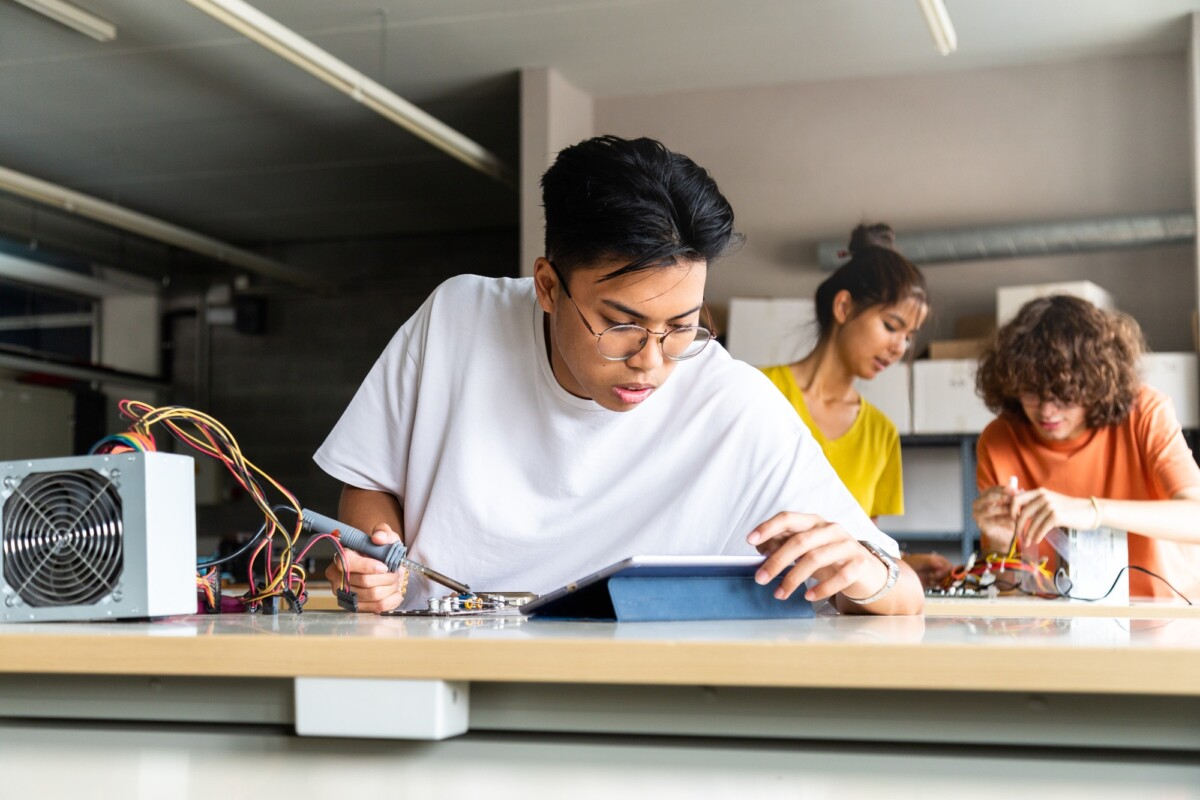
Student led instruction is a teaching method where students take charge of their own learning. Instead of the teacher leading every lesson, students guide discussions, ask questions, and explore topics on their own. This approach helps students develop critical thinking, independence, and a deeper understanding of the subject. In this article, we will explore everything about student led instruction, including its benefits, challenges, and how to implement it effectively in the classroom. We will also discuss how it supports high quality instruction and improves student engagement.
Start your journey to a brighter future—Enroll now!
What Is Student Led Instruction?
Student led instruction is a teaching strategy where students actively participate in their learning process. Instead of passively listening to the teacher, they take responsibility for exploring topics, asking questions, and collaborating with peers. Here’s how it works:
-
Students Take the Lead – Instead of the teacher explaining everything, students research, present, and discuss topics. They might work in groups or individually to explore new concepts.
-
Teachers Act as Guides – The teacher’s role shifts from lecturer to facilitator. They provide resources, ask guiding questions, and support students when needed.
-
Focus on Collaboration – Students learn from each other through discussions, peer reviews, and group projects.
-
Encourages Critical Thinking – Since students explore topics on their own, they develop problem-solving and analytical skills.
This method creates a more engaging classroom where students feel empowered in their learning journey.
Benefits of Student Led Instruction
Student led instruction has many advantages for both students and teachers. When done correctly, it improves learning outcomes and creates a more dynamic classroom. Here are the key benefits:
-
Improves Engagement – When students take charge of their learning, they become more interested in the subject. Instead of just listening, they actively participate, which keeps them motivated.
-
Builds Confidence – Presenting ideas, leading discussions, and teaching peers helps students gain confidence in their abilities.
-
Encourages Deeper Learning – Students who explore topics on their own develop a better understanding than those who only memorize facts.
-
Develops Leadership Skills – Leading group projects and discussions helps students practice communication and teamwork.
-
Supports High Quality Instruction – When students take an active role, teachers can focus on providing personalized support, leading to better learning experiences.
By using student led instruction, teachers can create a classroom where students are excited to learn and take ownership of their education.
Challenges of Student Led Instruction
While student led instruction has many benefits, it also comes with some challenges. Teachers need to be prepared to address these issues for the method to work effectively. Here are some common challenges:
-
Requires Preparation – Students need clear guidelines and resources to lead their own learning. Teachers must plan carefully to ensure students stay on track.
-
Some Students May Struggle – Shy or less confident students might find it difficult to take charge. Teachers should provide extra support to help them participate.
-
Classroom Management Can Be Tough – Without proper structure, student led discussions can become chaotic. Setting clear rules and expectations is important.
-
Not All Topics Are Suitable – Some complex subjects may still need direct teacher instruction. A balance between student led and teacher led methods works best.
Despite these challenges, student led instruction can be highly effective with the right strategies.
How to Implement Student Led Instruction
Implementing student led instruction requires planning and patience. Here’s a step-by-step guide to help teachers introduce this method successfully:
-
Start Small – Begin with short student led activities before moving to full lessons. For example, let students lead a 10-minute discussion or present a small topic.
-
Provide Clear Instructions – Explain expectations, roles, and guidelines so students know what to do. Rubrics and checklists can help keep them on track.
-
Use Group Work – Divide students into small groups where they can collaborate, discuss, and teach each other.
-
Encourage Questions – Teach students how to ask open-ended questions to deepen discussions.
-
Give Feedback – After student led activities, provide constructive feedback to help them improve.
-
Gradually Increase Responsibility – As students become more comfortable, give them more control over lessons and projects.
By following these steps, teachers can create a classroom where student led instruction thrives.
Start your journey to a brighter future—Enroll now!
Examples of Student Led Instruction
There are many ways to use student led instruction in the classroom. Here are some effective examples:
-
Student-Led Discussions – Instead of the teacher leading every discussion, students take turns asking questions and facilitating conversations.
-
Peer Teaching – Students research a topic and teach it to their classmates through presentations or hands-on activities.
-
Project-Based Learning – Students work on long-term projects where they choose topics, conduct research, and present their findings.
-
Flipped Classroom – Students review lesson materials at home (like videos or readings) and use class time for discussions and activities.
These methods help students take ownership of their learning while developing important skills.
Student Led Instruction and High Quality Instruction
High quality instruction means teaching in a way that maximizes student learning. Student led instruction supports this by:
-
Promoting Active Learning – Students engage more when they lead discussions and activities.
-
Encouraging Critical Thinking – Instead of memorizing facts, students analyze and apply knowledge.
-
Providing Personalized Learning – Teachers can give individual support while students work at their own pace.
When combined with traditional teaching methods, student led instruction enhances the overall quality of education.
Final Thoughts
Student led instruction is a powerful teaching method that increases engagement, builds confidence, and improves learning outcomes. While it comes with challenges, proper planning and support can make it successful. By gradually introducing student led activities, teachers can create a classroom where students take charge of their education while receiving high quality instruction.
Would you like to try student led instruction in your classroom? Start with small steps and watch your students become more independent and motivated learners!
Start your journey to a brighter future—Enroll now!
FAQs
1. What is student-led instruction?
Student-led instruction is a teaching approach where students take an active role in guiding their learning process. This may involve leading discussions, setting learning goals, conducting research, or presenting information to peers.
2. How does student-led instruction differ from traditional teaching?
In traditional teaching, the teacher directs the learning process. In student-led instruction, students have more control over the content, pace, and methods of learning, while the teacher acts as a facilitator or guide.
3. What are the benefits of student-led instruction?
This approach promotes critical thinking, independence, communication skills, and deeper engagement with the material. It also helps students develop leadership and collaborative abilities.
4. What are some examples of student-led instruction?
Examples include peer teaching, student-led discussions, project-based learning, student-led conferences, and inquiry-based projects where students research and present topics of interest.
5. Is student-led instruction suitable for all age groups?
While more common in middle school, high school, and college settings, elements of student-led learning can be adapted for younger students with proper guidance and structure.
6. What role does the teacher play in student-led instruction?
The teacher acts as a facilitator, providing support, resources, and feedback. They help students set goals, stay on track, and ensure that educational standards are met.




